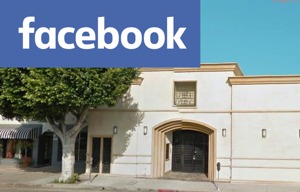BEREISHIS
I. Summary
A. Creation. The Torah begins by stating that in the beginning Hashem created from nothingness the heaven and earth. However, the earth was yet void and without shape or order. During the first six days, Hashem shaped, made and placed everything in the universe in its proper functioning position. The order of this Divine task was as follows:
First Day: Creation of light and darkness;
Second Day: Arrangement of the “Rokiah” to separate between the heavenly and earthly waters;
Third Day: Separation of water and land (and completion of the creation undertaken on the second day); vegetation;
Fourth Day: Creation and placement of the sun & moon in the sky;
Fifth Day: Creation of sea life and birds;
Sixth Day: Creation of reptiles, animals and man; and
Seventh Day: Hashem “rested” from His work, and sanctified the seventh day as Shabbos
B. Creation of Man/The Tree of Knowledge. Hashem decided that it wasn’t good for man to be alone, so He brought all of the animals and birds before Adam (“Odom”), who named each of them but couldn’t find a mate for himself among them. Hashem thus put Adam to sleep, removed one of his ribs and closed up the wound with flesh. He shaped, developed and completed the rib, making it into Eve (“Chava”) who He brought before Adam. Hashem placed them into the Garden of Eden, where they were free to eat anything except the fruit of the Tree of Knowledge. However, Eve fell prey to the nochosh (evil serpent), who convinced her to eat the forbidden fruit and give some to Adam. As a result, they we punished by Hashem, by being evicted from the Garden of Eden and forced to live as human beings as we know it (i.e., having to toil for their sustenance and experience death and the pain of childbirth); the serpent was punished by having to crawl on the ground and eat the dust of the earth.
C. Cain/Abel (Hevel). Adam and Eve had two sons, Cain (who became a tiller of the land) and Abel (who became a shephard). Both Cain and Abel brought offerings to Hashem — Abel’s offering was sincere and of his finest flock; Cain’s offering was insincere and of the worst portions of his crop. Hashem only accepted Abel’s offering. Cain, greatly angered and embarrassed, killed Abel while they were in the field. Asked by Hashem about Abel’s whereabouts, Cain replied “Am I my brother’s keeper?” Hashem severely punished Cain for his actions, cursing him to be a wanderer over the face of the earth.
D. Subsequent Generations/Prelude to the Flood. Adam and Eve had a third son, Sheis, and additional children. As each new generation reproduced, the numbers of mankind increased. There were ten generations from Adam to Noach, including two Tzadikim (Chanoch & Mesushelech). However, man turned to evil and practiced immortality and violence. Hashem began reconsidering His act of populating the world with mankind. Noach, however, found favor in Hashem’s eyes.
II. Divrei Torah
A. Lilmode Ul’lamed (Rabbi Mordechai Katz)
Proof of Hashem’s Hand in Creation. When the Rambam taught that the world was created by Hashem, a heretic disagreed. Instead, said the heretic, the world had existed forever and no one created it. The Rambam asked the man to leave the room for several moments. When he was asked to re-enter, a beautiful painting hung on the wall. The heretic admired the painting and asked who had painted it. The Rambam answered that he had spilled some paint on a canvas and that painting had taken shape by itself. The heretic laughed mockingly and said “that is impossible; just by looking at the perfect design of the painting, anyone can tell that someone painted it carefully and purposefully.” The Rambam responded “the same is true of the world; when examining how perfectly all its features exist and interact, anyone can tell that it was formed by an All-Knowing Creator”.
B. Growth Through Torah (Rabbi Zelig Pliskin)
1. Hashem sheds light even at the greatest moment of darkness. “And the earth was desolate and void, and darkness was upon the waters . . . and Hashem said, Let there be light and there was light”. The Chofetz Chaim taught that these verses serve as a tremendous inspiration to us in times of darkness. At the beginning of creation the world was completely dark, but one statement by Hashem was sufficient to light up the world. Keeping in mind that Hashem has the power to shine forth a magnificent light will help us overcome moments of despair. Whenever you feel darkness, repeating the words “Let there be light” will allow the light of Hashem to penetrate your heart and soul, giving you the ability to deal with any hardship from a position of spiritual strength.
2. Recognizing that what we have is “very good”. “And Hashem saw all that He made, and behold it was very good.” The Baal Shem Tov showed his disciples how a person’s situation can be exactly the same, but one day he will be full of complaints while on another he will be full of joy. To illustrate the point, he called in a water-carrier and asked him how things were going. “I’m getting older and I feel so weak,” the man replied. “My children constantly study and don’t help me out. I have to support my in-laws, and find the financial obligations a real burden. My wife is so sickly, and I feel like I’m falling apart.” On another day, the Baal Shem Tov asked him again how things were going. With a big smile, he replied “I am so grateful to Hashem for all of His kindness. Even though I am old, I am not only able to support myself, but I am even able to support the Torah study of my children and in-laws who study with such diligence. My wife is wonderful to me; with great sacrifice she makes me so happy.” We constantly choose how to view our life situation; even though nothing external has changed, we can still view our life in very positive ways.
3. One must overcome worrying about the future in order to appreciate what he/she has. Rashi (Bereishis 6:6) cites as an analogy a concept that is crucial for living a happy life. When a child is born, his/her parents are happy. Why aren’t they sad that eventually the child will die? The answer is that one must live in the present. At a time of joy, experience the joy of that moment. Do not allow future sorrows to destroy the positive aspects of the present. Learning to live in the present frees oneself from much needless misery and suffering.
C. Torah Studies (the Lubavitcher Rebbe, Rabbi Menachem M. Schneerson, z’tl)
The First Creation “And G-d said, Let there be light, and there was light.” Why was light the first creation (for it has no value in itself; its usefulness depends on the existence of other things which are illuminated by it or which benefit from it)? If it was simply preparation for things to come, it could have been created later — i.e., right before plants (which grow by the help of light) or animals (who can distinguish light and darkness). The purpose of the world that Hashem was to create (a place where the Divine light would be hidden in the heavy shrouds of material existence) was that it should be purified and the pristine light of G-d restored. Since light was thus the purpose of creation, it was created on the first day. “Light,” in turn, is the purpose of each Jew: Each Jew must transform his/her situation and environment to light, not merely by driving out the darkness (evil) by refraining from sin, but by changing the darkness itself to light by positive commitment to good. The world was created so that Israel through Torah should turn it into the everlasting light of G-d’s revealed presence, in the Messianic fulfillment of Isaiah’s word: “the sun shall no more be your light by day, nor for brightness shall the moon give you light: But the L-rd shall be for you a light everlasting.”
D. Love Thy Neighbor (Rabbi Zelig Pliskin)
In all encounters with other people, remember that you are dealing with a being who was created in Hashem’s image. “And G-d created man in His own image; in the image of G-d He created him.” Rabbi Akiba said “The verse, Love your fellow man as yourself’ is a great principle of the Torah.'” Ben Azai said “The verse, When G-d created man He created Him in His image’ is an even greater principle.'” Love of one’s fellow man which isn’t motivated and nourished by the realization that man was created in G-d’s image is doomed to failure. When we realize that our fellow man was fashioned in Hashem’s image, he/she is suddenly transformed into a being that is without parallel.
E. In the Garden of the Torah (the Lubavitcher Rebbe, Rabbi Menachem M. Schneerson, z’tl).
1. Finding the Light for Ourselves. When the Torah describes creation, its first words are not “Let there be light,”; instead, it speaks of “void and darkness”. Why? Chazal (our Sages) explain that G-d’s motive in creating the universe was “a desire for a dwelling [for Him] in the lower realms.” A dwelling means a home, a place where one’s essence is manifest; the “lower realms” refer to our material universe, in which G-dliness can’t ordinarily be perceived. Had Hashem begun with light — were he to have created a world that recognizes Him effortlessly — all existence would have been one with Him and there would have been no “lower realms”. G-d, however, wants man to exist in a universe which by its very nature seems to separate him from his Creator, thereby allowing us the opportunity to realize the connection for ourselves.
2. Two Beginnings. To help ensure that the “lower realms” would be capable of transformation into a “dwelling” for Hashem, Hashem embedded two distinct elements within creation from the outset. As Rashi comments, the word “Bereishis” can be read “b’ reishis” (“two entities which are called beginning'”); as Chazal commented: Creation is for the sake of Torah (the beginning of the path) and the Jewish People (the beginning of Hashem’s crop). Since the Torah and Jewish people are one with Hashem, the observance of mitzvos expresses the purpose of creation (“a mitzvah is a candle, and the Torah light”).
3. Partners In Creation. The simple meaning of the words “[i]n the beginning” indicates that creation is only the first phase in an ongoing process. This highlights the importance of man’s contribution — man is intended to be G-d’s “partner in creation”, helping G-d realize His desire for a dwelling in the “lower realms”. G-d created the material world, but left to man the task of revealing the spiritual within it. The Tzemach Tzedek, z’tl (the third Lubavitcher Rebbe) said: “according to the stance one adopts on Shabbos Bereishis, the entire year follows.” For every year is a renewal of the cycle of creation. The Zohar teaches that “G-d looked into the Torah and created the world; man looks into the Torah and maintains the world.”
F. Kol Dodi on the Torah (Rabbi David Feinstein)
1. “In The Beginning”. “In the beginning of G-d’s creating the heavens and the earth.” According to Rashi, the word “bereishis” is grammatically a construct noun, i.e., in the beginning OF something. In the beginning of what? The unstated subject of this verse if the Torah itself, which existed from the outset. Thus, we can read this verse as “in the beginning of Torah, Hashem created the heavens and the earth”. What does this mean? Chazal teach that before Hashem created the world, He first made the Torah, which He then used as a blueprint and guideline for designing the world. In other words, He created a world to fit the Torah, to provide situations in which the Torah can function. The converse is also true — that is, just as the Torah is the justification for the world, it has no meaning unless it is practiced; this is why the Torah was given to human beings.
2. “G-d blessed the Seventh Day”. Rashi comments that this verse refers to the double portion of manna which fell on the day before Shabbos. Since we no longer have manna, how does this blessing apply to us today? Later in this Parsha, man was given the curse of hard work (“by the sweat of your brow shall you get bread to eat”); however, this curse doesn’t apply to Shabbos. Chazal teach that all of a man’s provisions are rationed for him, except for his expenses of Shabbos. For one day a week, Hashem provides for all of our needs, absolutely free of charge, as if we were guests at His table. Thus, the work we do in six days gives us only six days of livelihood; what we need for Shabbos comes directly from heaven, in fulfillment of the blessing Hashem gave to the seventh day.
G. V’Shee-Non-Tom (Rabbi Elias Schwartz)
The importance of Derech Eretz. Hashem said “Let us make a man . . . “. We all know that there is only one G-d; why, then, is this written in the plural? Rashi notes that while G-d obviously didn’t need any help creating man, He discussed this with the angels in heaven, in order to teach us derech eretz, respect for the opinion of others and the value of humility (i.e., no one should feel that they are so great that they need not discuss their problems with others). As Rabbi Elchonon Wasserman, z’tl taught, for here “we see how important it is for the Jew to be an individual of good character, to be humble and friendly.”
NEXT PARSHA: NOACH





 Visit the group and request to join.
Visit the group and request to join.
